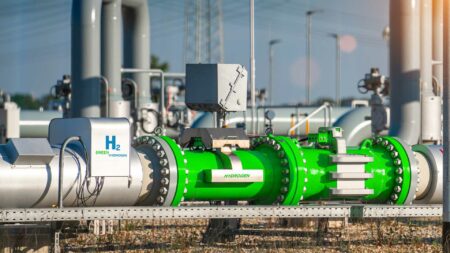The arid northern rangelands of Kenya have long been home to nomadic herders whose lives revolve around the delicate balance of land, livestock, and seasonal migration. However, these vast landscapes have become a flashpoint in the global carbon offset market, attracting investments from major tech companies such as Netflix and Meta.
The Northern Kenya Rangelands Carbon Project, touted as the largest of its kind, promises to sequester vast amounts of CO2 by controlling grazing practices. While this approach is marketed as a win-win for climate mitigation and community development, reality reveals deep tensions and systemic issues.
A Complex Web of Carbon and Grazing
At the heart of the initiative is “planned rotational grazing,” a method designed to allow grasslands to recover and sequester carbon in the soil. Spanning an area comparable to New Jersey, the project claims it will offset the equivalent annual emissions of ten million cars over three decades. Managed by the Northern Rangelands Trust (NRT), a conservation organization with colonial roots, the project organizes indigenous lands into conservancies that combine tourism, livestock management, and carbon offset production.
By 2022, Netflix and Meta had purchased over 250,000 tons of the project’s carbon offsets. While the NRT describes the process as participatory and beneficial to local communities, evidence suggests otherwise. Many herders remain unaware of the project’s mechanics, and key decisions are made without their direct input. Furthermore, grazing boundaries enforced under the initiative—often marked by extensive fencing—have displaced herders, exacerbating tensions and resource scarcity.
Community Concerns and Legal Challenges
The project’s credibility was questioned when Verra, the global leader in carbon offset verification, temporarily suspended its certification of the NRT’s credits in 2023. Concerns included inconsistencies between reported CO2 reductions and observed vegetation changes, as revealed by satellite imaging. Although certification was later reinstated, the investigation underscored significant methodological shortcomings.
Kenya’s Community Lands Act requires free, prior, and informed consent (FPIC) for commercial use of communal lands. Yet, residents often claim they were neither adequately consulted nor informed about the project. Many learned of the carbon credits only after revenues began to flow years into the initiative. This disconnect has fueled a legal battle questioning the constitutionality of the NRT’s establishment of conservancies without transparent community consent.
Human rights lawyer Innocent Makaka, representing pastoralists in court, argues that the agreements underpinning the conservancies were not subjected to public participation. He notes that the lack of community engagement undermines the legitimacy of the carbon offset scheme, adding, “These conservancies limit land use without legal basis and were established at the expense of the community.”
Displacement and Enforcement Challenges
The implementation of grazing restrictions has led to displacement and, in some cases, violent confrontations. Armed rangers employed by the conservancies enforce the grazing boundaries, sometimes with deadly consequences. Testimonies from affected families recount extrajudicial killings tied to disputes over grazing access. Satellite imagery confirms that fenced conservancy areas often exhibit greener vegetation than surrounding lands, highlighting the stark divide between conserved and overgrazed areas.
Rangers and community leaders argue that the fences are primarily for wildlife conservation and anti-poaching efforts. However, maps and reports indicate these fenced areas are integral to the carbon offset project. The resulting lack of clarity over objectives and enforcement practices has fueled suspicion among local populations.
Financial Transparency and Benefit Distribution
The carbon offsets have generated millions of dollars, yet questions remain about where the money goes and who benefits. According to project documents, up to 30% of revenues are taken as marketing fees by a U.S.-based company, Native. Additional cuts go to Verra, soil scientists, and Kenyan county governments. The NRT retains 40% for operational costs, including hiring guards and maintaining infrastructure. The remaining funds are distributed to conservancies for community projects, but none of the revenues are paid directly to herders or households.
Critics argue this model consolidates financial control within the NRT and undermines community autonomy. Conservancies must submit project proposals to access funds, and the NRT has significant discretion over approvals. Furthermore, conservancies are prohibited from publicly discussing revenue-sharing terms, raising concerns about accountability.
Balancing Conservation and Community Rights
The Northern Kenya Rangelands Carbon Project exemplifies the challenges of integrating global climate goals with local realities. While carbon offsets offer a potential revenue stream for marginalized regions, their implementation requires genuine community participation, transparent financial practices, and respect for local livelihoods. The ongoing court case and mounting community dissent highlight the need to rethink how such projects are structured and governed.
The stakes remain high as Kenya’s parliament debates a legislative bill to regulate carbon offset sales. Without significant reforms, initiatives like this risk perpetuating the inequalities they claim to address. For now, the global carbon market’s expansion into Kenya’s rangelands offers a cautionary tale of the tensions between environmental conservation, economic development, and social justice.








